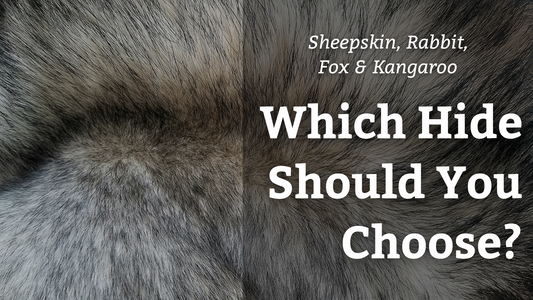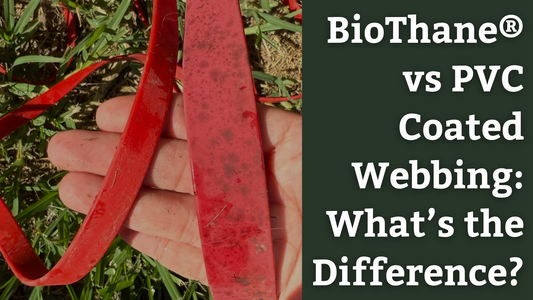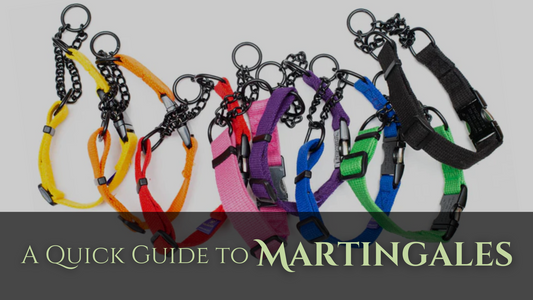As with any field of science or research, the understanding and best practice is always evolving as more knowledge comes to the fore. In the case of things like dog training, however, you end up in a situation where some of the out of date ‘facts’ still persist, despite being thoroughly debunked. There are two main reasons for this: firstly, you have a lot of ‘old school’ trainers and ‘gurus’ that still practice and share knowledge that we now know to be outdated. And secondly; there is no overall unifying and governing body that enforces what knowledge should be taught and used. Sure, you can get dog training qualifications through the National Dog Training Federation, Tafe or even Delta... but realistically, there's nothing to stop anyone from calling themselves a dog trainer, perhaps even a dog... whisperer, shall we say? So, it’s a little hard to know what to believe!
In the interest of emphasising the truth about tug, we’d like to shine a light on some of these outdated myths, and the reasons why they are best left behind.

Myth #1: Tug is For Working Breeds
This myth claims that the only dogs that need or benefit from tug are focused working breeds (such as Border Collies, Kelpies, or Belgian Malinois), though the myth sometimes also includes “tough” dogs under this umbrella (breeds like Pit Bull Terriers, and Rottweilers for example). While it’s true of course that these breeds can and do benefit from tug, it’s far from true that they are the only ones to do so. Not to mention the fact that anyone who’s spent remotely any time around these so-called “tough” dogs know they’re about as sooky as any dog can get!
But tug is not just for working dogs. Tug is a game for every dog. The wonderful thing about tug is that it can be used to satisfy and reward drive in dogs that already have it (i.e. your working breeds) but it can also be used to build and create drive in dogs that don’t have it in spades. So, there’s no reason that your companionable cuddly little Cavalier or Maltipoo can’t enjoy and benefit from tug as much as any working dog!
Myth #2: Tug Encourages Your Dog to Bite You
Tug make dog use teeth. Dog use teeth to bite you. That seems to be the general logic of this myth, and it’s a pervasive one. While playing tug does involve teeth, so do most doggy activities. In a twist that shocks no-one, it does not mean your dog will become bitey. Dogs also love chomping down on food but the myth conveniently ignores that fact.
That’s because we have rules and boundaries around doggy mealtimes! We use an allocated bowl, usually with allocated times and often with a release word. If your dog felt entitled to eat whatever and whenever it wanted, then it probably would be more likely to bite (or perhaps just on the kitchen counter stealing snacks). Much in the same way, playing tug should have similar boundaries that we create around other activities. Tug is the perfect training tool for teaching your dog that humans are not for biting, as well as building their self-control for times of high arousal so that they don’t bite. As an added bonus, if your dog is already having issues with biting, playing tug can decrease this behaviour as it gives them an appropriate outlet for biting.
Myth #3: Letting Your Dog Win Tug Will Increase Their Dominance
Dominant this, alpha that. You’d think this one would have died out by now, but it’s a strongly held view still that you need to be the ‘alpha’ or your dog will assert dominance over you. If you want to go down the rabbit hole of why this theory is outdated, (spoiler: the creator of the alpha dog/dominance theory as it stands has even withdrawn it himself) then be prepared to devote a few hours to reading!
But even if we put aside the debunked alpha dog theory stuff for a moment, let’s say you have concerns with a dog exhibiting ‘dominant’ or pushy behaviour. Winning tug will not increase or worsen this behaviour! Letting them win tug is a great way to build up a relationship with your dog, as they get the fun of winning (duh, nobody likes to play a game where they always lose) and provides them with a healthy outlet for all that pushy energy, so that over time you’ll see a decline in this ‘dominant’ attitude, and tug remains an effective tool for training and rewards. 
Myth #4: Playing Tug Increases Your Dog’s Aggression
You know it’s a good game of tug when your dog starts really throwing their back into it, and lets out those really deep and snarly growls. Contrary to some belief, this isn’t actually a sign that your dog’s aggression is charging up, ready to be unleashed on you in a moment of weakness. Dogs are naturally playful, and as a result, can get super engrossed in games of tug, leading to all the very vicious-sounding growls and barks.
Even better, playing tug can actually have the opposite effect of the myth! As we discussed above, tug can act as an outlet for dogs, letting them vent any excess energy or undesirable traits. As such, playing tug is an excellent way to satisfy the natural predatory urge in dogs, giving them a fun way to safely be all tough and scary and growly (a real technical term, obviously). As a result, some trainers have noted that playing tug has had the effect of reducing aggressive behaviour in dogs, as all that excess energy has been redirected into a fun and satisfying game.
Myth #5: Playing Tug Will Cause Hard Mouth in Gundogs
This one may not make sense if you’re not in the hobby, but it’s one that frequently crops up in the hunting dog circles. Gundogs are working dogs specifically trained to assist hunters to find and retrieve fallen game. These dogs are taught not to damage the game in retrieval, and their ability to gently hold game and resist the bite urge is a highly desirable trait called ‘soft mouth’. You can probably see where this is going!
For a long time, it’s often been advised against playing tug with gundogs due to the myth that it will create ‘hard mouth’ i.e. teach the dog to start biting and being rough with game retrieval. However, like many working dogs, they are excellent at switching between on-duty and off-duty, and are easily able to differentiate between the two. In fact, playing tug allows them to engage a different aspect of their prey drive that they suppress when working. It gives them a chance to safely thrash and attack their prey for a bit, effectively 'blowing off steam' before they go back on the job.

So that’s it! The five most prevalent tug-related myths we’ve heard circulating, and why they don’t really hold much weight anymore. So go forth, armed with knowledge and the ability to eloquently shut down anyone who tries to claim you shouldn’t be playing tug with your dog for any of the above reasons!
For a variety of fun and safe ways to play tug with your dog, we recommend checking out our deep-dive on #tuglife here and check our awesomely wide range of tugs to suit any dog here.




